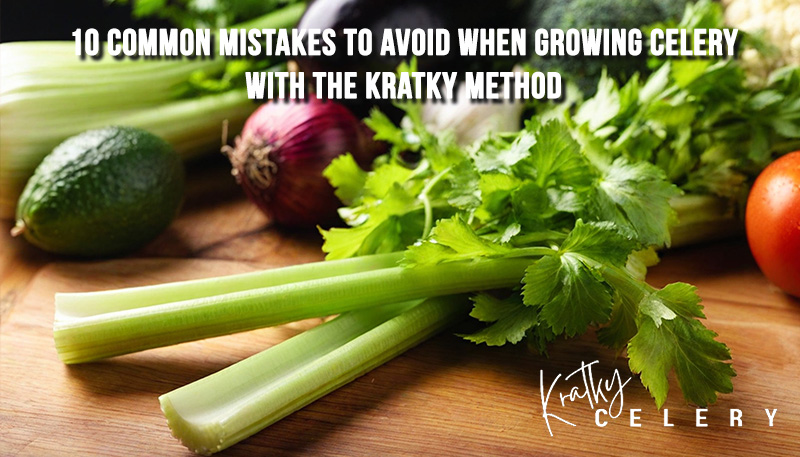The Kratky method is a game-changer for hydroponic gardening, offering a simple, low-maintenance way to grow fresh produce. However, growing celery with this method requires careful attention to detail. Small mistakes can impact your plants’ health and yield, but with the right knowledge, they’re easy to avoid. Here are 10 common mistakes gardeners make when growing celery with the Kratky method and how to prevent them.
1. Using the Wrong Nutrient Solution
Celery thrives on a specific balance of nutrients, particularly nitrogen, phosphorus, and potassium. Using a nutrient solution designed for flowering plants or fruits can stunt growth. Always choose a formula specifically for leafy greens or vegetables and ensure it’s well-balanced.
2. Neglecting pH Levels
Maintaining the correct pH level is critical for nutrient absorption. Celery prefers a pH range of 5.5 to 6.5. If the pH is too high or too low, your plants may show signs of nutrient deficiency even if the solution is properly mixed. Test the water regularly and adjust as needed.
3. Insufficient Light
Celery requires 6–8 hours of light daily to grow healthy and strong. Indoor gardeners often underestimate the importance of grow lights, especially during winter months. Invest in high-quality LED grow lights and position them 12–18 inches above your plants for optimal results.
4. Inadequate Reservoir Size
The size of your reservoir directly impacts the water and nutrient supply for your celery plants. Using a container that’s too small can lead to rapid depletion of resources, stressing your plants. Opt for a larger reservoir, such as a 5-gallon bucket, to ensure consistent growth.
5. Allowing Water Levels to Drop Too Low
While the Kratky method is low-maintenance, it’s not a set-it-and-forget-it system. If water levels drop too far, the roots may no longer reach the nutrient solution. Check the water level weekly and top off the reservoir to maintain proper root access.
6. Poor Seed Germination Practices
Celery seeds are notoriously slow to germinate. Skipping the proper germination process can delay your crop significantly. Start your seeds in a warm, well-lit environment using a grow medium like rock wool or peat pellets. Keep them moist but not soaked.
7. Overcrowding the Plants
Celery requires adequate space for airflow and light penetration. Overcrowding can lead to poor growth and increased risk of disease. When setting up your Kratky system, ensure each plant has at least 6–8 inches of space around it.
8. Ignoring Temperature Requirements
Celery prefers cooler temperatures, ideally between 60–75°F (16–24°C). High temperatures can cause the plants to bolt (produce flowers), which reduces the quality of the stalks. Keep your growing area in the ideal range, especially during summer.
9. Failing to Prevent Algae Growth
Light entering the reservoir can promote algae growth, which competes with your celery for nutrients. To prevent this, use an opaque container or cover your reservoir with foil or another light-blocking material.
10. Harvesting Too Late
Waiting too long to harvest celery can result in tough, bitter stalks. Celery grown in a Kratky system is typically ready to harvest in 10–12 weeks. Monitor your plants closely and harvest when the stalks are 6–8 inches tall and firm to the touch.
Tips for Success with Kratky Celery
To ensure a successful harvest, plan ahead and address potential issues before they arise. Regular monitoring of your plants, reservoir, and environment will help you catch problems early. With practice, you’ll be able to grow fresh, crisp celery with ease.
Growing celery using the Kratky method is a rewarding experience when done correctly. Avoiding these common mistakes will save you time, effort, and resources while delivering healthy, flavorful celery every time. Whether you’re new to hydroponics or an experienced gardener, following these tips will help you get the most out of your Kratky celery setup.

